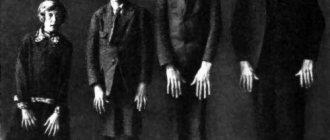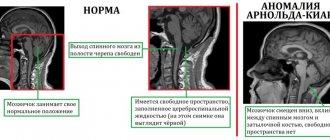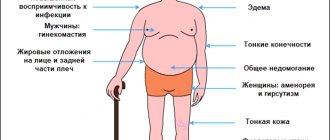general characteristics
Stress for a person is not always bad. Mild stress, such as when we are learning something new, helps us overcome difficulties. Ultimately, thanks to such stress, we acquire a new skill, which means we develop.
However, the body reacts to long-term, ongoing stress with emotional burnout. The body is overloaded, mental and physical exhaustion occurs. It's not just a bad mood. CMEA is characterized by incessant nature and intensity. It is difficult to get out of this state.
In 1974, the American psychiatrist H. Freudenberger first described a psycho-emotional state that was incomprehensible to him and his fellow doctors. It was due to the fact that they had close and quite frequent contact with patients.
A little later, this phenomenon was described by Christina Maslach. She called it emotional and physical exhaustion syndrome. At the same time, against the background of this syndrome, a negative attitude towards work and negative self-esteem are formed.
People whose work is directly related to communication with other people are most susceptible to burnout syndrome. In particular, these are representatives of the following professions:
- doctors;
- psychologists;
- teachers;
- social service workers;
- sales managers, etc.
Freudenberger also noted that this condition develops in people who:
- prone to sympathy;
- overly dreamy and therefore unstable in their self-esteem;
- obsessed with obsessive ideas;
- strive to do their job perfectly.
SEW is often observed in creative individuals (writers, artists, musicians, painters, etc.). Especially if their talent remains unrecognized. In addition to this category, the syndrome often manifests itself in women who have recently become mothers or are engaged exclusively in housework.
Factors that provoke the occurrence of SEV include:
- Monotonous work that turns into a routine.
- Work in a stressful environment where stressful situations arise regularly.
- Constant criticism of management.
- Insufficient remuneration for work performed. And not only material, but also psychological, for example, praise.
Burnout syndrome can be considered as a way of psychological defense. A person completely or partially turns off emotions in response to an impact that causes emotional trauma.
Burn out at work like a match - with roots in the USSR
The Soviet people understood no worse than the Americans what kind of attack this was.
At least everyone knew how it ended. “Another one burned out at work” - this fatal diagnosis was honorable. Within the framework of militant collectivism, this had some value for society, although for an individual person who died with such romanticism, it was probably still tragic. Everyone knew the 3 stages of the phenomenon of workaholism:
- “burn at work”;
- “to burn out on something”;
- burn.
Burn – that was our way! But it was possible to burn honorably - at work and ingloriously - from vodka. At first glance, workaholism and alcoholism have nothing in common. But if you look closely, you can recognize similar features and symptoms in these “excesses.” And the general last stage: the personality’s descent into degradation.
The Americans have nothing to brag about: we, too, have been burning, burning out and burning out for a long time. And it was even believed that this is exactly how one should live. Remember the fiery Sergei Yesenin: “For me, rather than rotting on a branch, it’s better to burn in the wind.” Poets, writers, actors, doctors, and social activists burned before their earthly term.
And long before Friendberger, his famous compatriot Jack London gave a comprehensive description of the burnout syndrome using the example of his hardworking genius Martin Eden in the work of the same name.
Martin, who worked 15-20 hours a day, striving for his goal, eventually achieved it. But, alas, by that time he no longer needed fame, money, or a lover. It burned to the ground. A painful state in which he no longer felt anything, did not want to and could not. Having achieved everything he dreamed of, he simply committed suicide. Well, another one burned out at work... More precisely, from work.
Symptoms of emotional burnout
Symptoms of SEV can be divided into 3 groups:
- psychophysical;
- socio-psychological;
- behavioral.
Psychophysical symptoms include:
- chronic fatigue, when a person feels tired not only in the evening, but also in the morning immediately after waking up;
- lethargy and muscle weakness;
- regular headaches;
- insomnia;
- decreased immunity and, as a result, frequent colds and acute respiratory viral infections;
- sudden weight gain or severe weight loss;
- deterioration of blood and hormonal levels;
- lethargy and drowsiness;
- deterioration of hearing, smell, touch, vision, tactile sensations.
Social and psychological symptoms manifest themselves in a person as follows:
- there is a feeling of indifference to work, indifference and boredom;
- depression, a feeling of depression and internal devastation develops;
- Nervous breakdowns often occur from outbursts of unreasonable anger to complete withdrawal and refusal to communicate;
- even small and insignificant events cause severe irritation;
- Negative emotions (resentment, shame, guilt, suspicion) do not leave, although there are no visible reasons for them;
- a feeling of increased anxiety and restlessness develops;
- a person is haunted by the fear that he will not cope with the task or that he will not succeed;
- lack of self-confidence and self-confidence.
Behavioral symptoms are expressed as follows:
- a person begins to go to work without enthusiasm and takes a long time to “get involved” in the work process;
- he increases the duration of breaks and, if possible, reduces working hours;
- puts off important tasks and instead deals with minor tasks;
- constantly takes work home, but never gets anything done;
- withdraws from colleagues or clients, such as students, patients;
- if a person is a leader, then it becomes difficult for him to make decisions;
- he becomes absolutely indifferent to the results of his work;
- abuses alcohol, tries drugs, smokes much more cigarettes than he is used to.
These signs can sometimes appear in a person exclusively at work. Or he experiences them constantly and transfers them to family and friendly relationships. The intensity and frequency of manifestation of signs of SEV depends on the stage of development of the syndrome.
Essence and types of syndrome
Burnout syndrome in medical workers
Since the work of medical employees involves regular communication with patients, the syndrome of professional emotional burnout threatens them to a greater extent than people of other professions
That is why it is important for specialists to undergo all kinds of examinations in a timely manner and correct their own behavior.
The work of a doctor is characterized by increased mental stress, frequent conflict and stressful situations. All the time, the doctor is under the gun of other people’s negative emotions, which in any case will affect his state of mind. As a result, in order to protect itself from stress, the body builds a certain barrier, as a result of which the doctor becomes less emotional and susceptible to other people's problems.
Professional burnout syndrome among teachers
A teacher at an institute or a teacher at a school constantly has to interact and communicate with people - colleagues, students, parents.
In this case, burnout syndrome may appear due to frequent psycho-emotional stress, regular noise and insufficient work organization. At the same time, the teacher constantly experiences a sense of increased responsibility and takes everything too personally. To return to normal life, experts recommend that teachers seek help from a psychotherapist, who will not only conduct a relaxing conversation, but also prescribe appropriate medication.
Burnout syndrome among psychologists
The work of psychologists also involves regular interaction with other people. The psychotherapist regularly encounters anger, irritation and temper. Moreover, he goes through every problem of the patient through himself in order to find a truly correct way out of the current situation. In this case, even a strong and self-confident person cannot always withstand the load that has fallen on his shoulders. That is why sometimes psychologists need the help of experienced specialists.
Personal burnout syndrome
A striking example of personality burnout syndrome can be the detached, indifferent behavior of a person. In this state, the patient changes his attitude towards friends and close people, relatives; he can no longer cope with the stress that arises in the workplace. The patient believes that he is no longer competent in his specialty. A person loses the meaning of life, since he does not receive joy or satisfaction from his own achievements. There is a need for loneliness and solitude. His memory deteriorates and his concentration decreases.
People with burnout syndrome can also negatively affect their colleagues, friends, and family. Patients constantly break down and make scandals, causing pain to others. It is impossible to help such people without consulting a psychotherapist.
CMEA stages
Burnout syndrome does not occur abruptly. It develops in stages as a person’s mental stress increases. Psychologist Jerrold Greenberg identified 5 stages of CMEA:
- At the first stage, a person is completely satisfied with his work activity. He is passionate about his work and is enthusiastic. Stressful situations that arise do not cause strong emotional stress. They only slightly reduce the employee’s activity and energy.
- As fatigue accumulates, the second stage of the syndrome develops. The person loses interest in his business. He has sleep disturbances. It could be insomnia. Or vice versa, excessive sleep, which does not bring relief. The feeling of overwork and apathy becomes constant.
- At the third stage, the feeling of depression and dissatisfaction with work intensifies. The person becomes irritable. He begins to think that he has no prospects in the future. Chronic fatigue provokes physical ailments.
- The fourth stage can be characterized as a crisis. A person's chronic diseases become aggravated. Because of this, performance decreases. Depression is getting worse. A person is not satisfied with the quality of his life, his own productivity.
- At the fifth stage, mental and physical disorders worsen to such an extent that life is threatened. Against the backdrop of severe depression, a person begins to abuse alcohol and take drugs. He is completely maladjusted both professionally and in personal and family relationships.
The sooner a person turns to a psychologist for help, the faster and easier he will cope with the syndrome.
How to recognize emotional exhaustion
To determine whether you are truly emotionally exhausted, you must first think back to your problems over the past three, four, or even five months. Please note that the broad time frame is fundamental. Because burnout syndrome requires a build-up of stress, it can surface after you've already fixed your problems and the storm has passed, so to speak.
.
Important!
At this point, you should analyze whether you were in a situation that demanded too much of you, or a situation where you had to constantly be on your guard and balance different ideas and thoughts.
Next, you should analyze yourself and check whether you have experienced the following symptoms and signs of emotional exhaustion:
- felt nervous most of the day;
- unexplained health problems such as abdominal, back, neck pain or headaches more than twice a week;
- trouble concentrating and memory loss, including important things you don't usually forget;
- lack of motivation, low energy and sad mood;
- feeling of overwork and lack of strength;
- sleep problems (trouble falling asleep, insomnia);
- hypersensitivity and irritability;
- difficulties with awareness here now.
Diagnostics
Only a specialist can correctly diagnose SEV. Diagnostics includes 3 stages:
- studying the patient's history and interviewing;
- laboratory research;
- testing.
First of all, the doctor studies the patient’s medical history, finds out the presence of chronic diseases and bad habits. Be sure to clarify the symptoms the patient is complaining about.
For a more complete picture, the doctor prescribes laboratory tests. Most often this list includes:
- general blood analysis;
- analysis to determine hormone levels;
- rapid test for liver and kidney function.
The main diagnostic method is testing, which was developed by the domestic psychologist V.V. Boyko. The test contains 84 statements to which the patient must answer “yes” or “no.” Based on the test results, the doctor will determine the phase of development of SEV. In total there are 3 phases.
- Voltage . The patient experiences conflict situations acutely. His anxiety level increases. He is dissatisfied with himself as a person. Feels backed into a corner. His psyche is struggling.
- Resistance . The patient begins to react to events inappropriately from the emotional side (screams, cries, breaks down, becomes hysterical). Some things no longer evoke emotions. More and more work tasks remain unfinished because he no longer considers them important. The psyche begins to give in.
- Exhaustion . In this phase, the patient experiences a deficit of emotions, detachment, and psychosomatic disorders. The psyche gave up completely.
If the patient does not take any measures, then one phase gradually gives way to another.
Treatment
The patient’s motivation and the support of loved ones play a big role in eliminating the symptoms of SES. At the first stage, a person is quite capable of coping with the syndrome on his own. To do this, sometimes it is enough to change your work schedule, reconsider your value system, have a good rest and take your mind off problems.
In more advanced cases, the help of a psychotherapist is necessary. Treatment is carried out comprehensively using the following methods:
- psychotherapy;
- medicines;
- change in work environment.
During psychotherapy sessions, the doctor changes the patient’s personal attitudes in relation to professional activities. It re-shapes the patient’s motivation and interest in work. It also teaches him how to properly distribute time and energy into various areas of life.
Psychotherapists use the following techniques and exercises.
- Communication skills training . It teaches the patient the ability to communicate effectively with other people. Its main task is to help the patient realize the importance of the presence of loved ones in his life.
- Teaching optimism . This training teaches the patient to perceive events not from a negative side, but from a more positive one.
- Prevention of frustration . This technique helps the patient to realistically assess his abilities and capabilities.
- Magic shop . In this exercise, the patient imagines that he is in a magic shop. In this store he can acquire any character trait that he thinks he lacks. The purpose of the exercise is to increase the patient’s self-esteem.
- Psychological debriefing . It represents a conversation between a doctor and a patient who has encountered a difficult event. The patient expresses his thoughts, describes sensations and feelings about the experience.
Depending on the clinical picture and severity of the syndrome, the doctor prescribes medications. It can be:
- antidepressants;
- beta blockers;
- sleeping pills;
- tranquilizers.
Drug treatment is carried out exclusively according to the doctor’s indications and under his supervision.
Unfortunately, there is no magic bullet that will help you avoid or instantly cure burnout. This is always a lot of work on yourself, on the ability to live harmoniously. If you devote all your time and energy to just one aspect of your life, burnout will inevitably occur. This is perhaps the main reason for the CMEA.
Who takes the most risk?
Nowadays, everyone burns out, regardless of their profession. Emotional burnout is typical for the following professions and groups of citizens:
- Doctors, social workers, teachers, volunteers , that is, all those who, due to their occupation, had to communicate closely with society.
- Workaholics, overwhelmed by the goal : to do as much as possible in as little time as possible.
- Writers who “can’t write,” composers who “can’t compose.”
- Mothers who are ready to go to the logging site just to take a break from their noisy babies at least for a little while. Emotional burnout is especially common for mothers who raise their children themselves.
- People raising “special” children . Caring for children with Down syndrome and autistic children is an ongoing and impenetrable stress that lasts for many years. In general, children with orphan (rare) diseases are strong stressors in the family.
- Those who care for bedridden patients . This is a colossal work that requires constant endurance, patience, humility and dedication from a person.
- People who go to work as if they were on a scaffold.
Doctors at risk
Not long ago, it was believed that burnout syndrome was the exclusive privilege of medical workers. It was explained like this:
- the profession of a doctor requires from a person constant emotional involvement and warmth, empathy, compassion, sympathy for patients;
- Along with this, there is an awareness of enormous responsibility for the health and lives of patients;
- the likelihood of making a tragic mistake during surgery or making a diagnosis;
- chronic nervous tension;
- the difficult choice that has to be made (to separate conjoined twins or not, to take risks by performing a complex operation on the patient, or to let him die peacefully on the table);
- excessive loads during epidemics and mass disasters.
Prevention
It is easier to prevent any disease than to treat it. This also applies to burnout syndrome, which is officially recognized as a disease. Prevention of eliminating the symptoms of SEV includes work in 2 aspects:
- physical;
- emotional.
For physical prevention, you need to do the following:
- eat properly and balanced;
- walk and relax in the fresh air as much as possible;
- exercise regularly;
- follow a daily routine and sleep at least 8 hours.
Everything seems clear with these points. If you are not used to regular physical activity, then read how to force yourself to play sports. I have already written about this.
Emotional prevention is more extensive. It includes a large list of actions from which you can choose the ones that are most suitable for you. So, here's what to do to avoid burnout.
- Give yourself a full day off. At this time, do any business, but not just work. For example, watch a TV series, read a book, go to a spa, etc.
- Stop scolding yourself for mistakes, and, on the contrary, learn to praise yourself for your achievements. Remember that the real cause of stress is your attitude towards failure, not the failure itself. Change it!
- Take a vacation at least once a year. It is advisable to go somewhere else during this time.
- Plan your day and prioritize correctly. The most important tasks need to be completed first. Everything non-essential can be put aside for a while.
- Create! Any creative activity helps to get rid of worries and worries. Draw, dance, sing, compose, sew, etc.
- Meditate.
The emotions that you have driven inside and forcibly held there will sooner or later come out. Therefore, you need to learn to “throw them out” so that no one around you gets hurt. How can you do this:
- tell someone about your feelings and problems (a close friend, a therapist, a loved one);
- write down your emotions on paper, and then burn it or tear it into small pieces;
- draw your emotion, and then paint it over or add something funny to it.
I found an interesting video for you in which a girl blogger shares her experience. She tells how she managed to cope with emotional burnout.
What are the consequences of emotional exhaustion?
If they do not go away on their own after some time, all these symptoms can lead to serious problems such as
such as major depressive disorder, anxiety attacks (associated with panic or generalized anxiety), and organic problems such as ulcers or gastrointestinal disorders.
In addition, emotional exhaustion entails problems with self-esteem, mainly because the person feels overextended and stops reminding himself of his achievements and abilities. Under the umbrella of burnout, your sense of helplessness—being very small in a very big world—grows.
Important!
By keeping all of these consequences of emotional exhaustion in mind, we can better understand how to deal with it.











